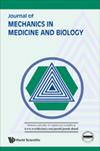Effect on Muscle Strength During Lifting Tasks with Wearable Suit Using Wire and Elastic Bands
IF 0.6
4区 医学
Q4 BIOPHYSICS
引用次数: 0
Abstract
Recently, as modern people’s consumption trends have been concentrated on contactless consumption such as online shopping since the 2019 COVID-19 Pandemic, the delivery industry, which is in charge of physical movement of online consumption activities, has also seen a series of utilization and demand. However, in contrast to the rapidly increasing volume of couriers, the labor environment of courier workers is poor, and the rapid increase in demand for courier service after the 2019 COVID-19 Pandemic has led to the rise in musculoskeletal diseases in courier workers. Various muscle support systems such as wearable robots have been developed to prevent musculoskeletal diseases in industrial sites, but the system is bulky, so the total weight is high, they are inconvenient to wear, and the wearers cannot freely perform activities when power is not supplied. In this study, the disadvantages of hard wearable robot systems, such as weight and power supply, were supplemented through elastic rubber bands and wires. In addition, wearable suits were developed to reduce the load on the body, prevent overwork, verify the effectiveness of work clothes, and prevent musculoskeletal diseases in courier workers. The experiment was conducted to verify whether the wearable suit affects muscle strength assistance by measuring the muscle usage when lifting weight after measuring the Maximum Voluntary Contract (MVC). The lifting types were classified into three types, and the strength assistance effects of the waist and lower extremities according to the wearable suit were compared.钢丝和松紧带对可穿戴服起吊时肌肉力量的影响
最近,随着新型冠状病毒感染症(COVID-19)疫情后,现代人的消费趋势集中在网络购物等非接触式消费上,负责网络消费活动实物移动的快递行业也出现了一系列的利用和需求。然而,在快递员数量快速增长的同时,快递员的劳动环境却很差,2019冠状病毒病大流行后快递服务需求的快速增长导致快递员肌肉骨骼疾病的发病率上升。为了预防工业现场的肌肉骨骼疾病,人们开发了各种肌肉支撑系统,如可穿戴机器人,但这些系统体积庞大,总重量高,不方便佩戴,在没有电力供应的情况下,佩戴者无法自由地进行活动。在本研究中,通过弹性橡皮筋和电线来补充硬可穿戴机器人系统在重量和供电等方面的缺点。此外,开发可穿戴的西装,以减轻身体的负荷,防止过度劳累,验证工作服的有效性,并预防快递工人的肌肉骨骼疾病。本实验在测量最大自愿契约(Maximum Voluntary Contract, MVC)后,通过测量举重时的肌肉使用量来验证可穿戴宇航服是否影响肌肉力量辅助。将提升方式分为三种,并根据可穿戴套装对腰部和下肢的力量辅助效果进行比较。
本文章由计算机程序翻译,如有差异,请以英文原文为准。
求助全文
约1分钟内获得全文
求助全文
来源期刊

Journal of Mechanics in Medicine and Biology
工程技术-工程:生物医学
CiteScore
1.20
自引率
12.50%
发文量
144
审稿时长
2.3 months
期刊介绍:
This journal has as its objective the publication and dissemination of original research (even for "revolutionary concepts that contrast with existing theories" & "hypothesis") in all fields of engineering-mechanics that includes mechanisms, processes, bio-sensors and bio-devices in medicine, biology and healthcare. The journal publishes original papers in English which contribute to an understanding of biomedical engineering and science at a nano- to macro-scale or an improvement of the methods and techniques of medical, biological and clinical treatment by the application of advanced high technology.
Journal''s Research Scopes/Topics Covered (but not limited to):
Artificial Organs, Biomechanics of Organs.
Biofluid Mechanics, Biorheology, Blood Flow Measurement Techniques, Microcirculation, Hemodynamics.
Bioheat Transfer and Mass Transport, Nano Heat Transfer.
Biomaterials.
Biomechanics & Modeling of Cell and Molecular.
Biomedical Instrumentation and BioSensors that implicate ''human mechanics'' in details.
Biomedical Signal Processing Techniques that implicate ''human mechanics'' in details.
Bio-Microelectromechanical Systems, Microfluidics.
Bio-Nanotechnology and Clinical Application.
Bird and Insect Aerodynamics.
Cardiovascular/Cardiac mechanics.
Cardiovascular Systems Physiology/Engineering.
Cellular and Tissue Mechanics/Engineering.
Computational Biomechanics/Physiological Modelling, Systems Physiology.
Clinical Biomechanics.
Hearing Mechanics.
Human Movement and Animal Locomotion.
Implant Design and Mechanics.
Mathematical modeling.
Mechanobiology of Diseases.
Mechanics of Medical Robotics.
Muscle/Neuromuscular/Musculoskeletal Mechanics and Engineering.
Neural- & Neuro-Behavioral Engineering.
Orthopedic Biomechanics.
Reproductive and Urogynecological Mechanics.
Respiratory System Engineering...
 求助内容:
求助内容: 应助结果提醒方式:
应助结果提醒方式:


